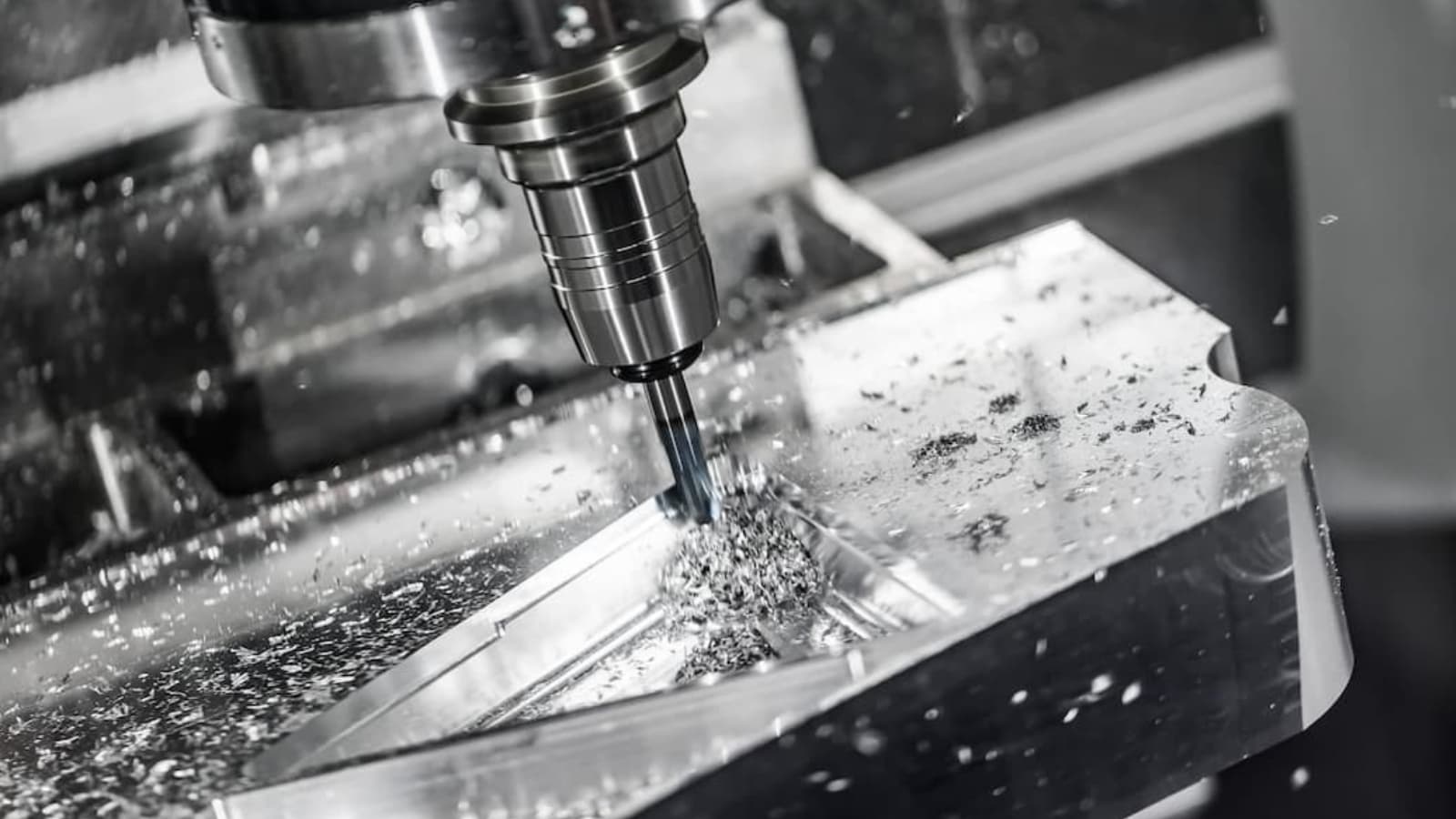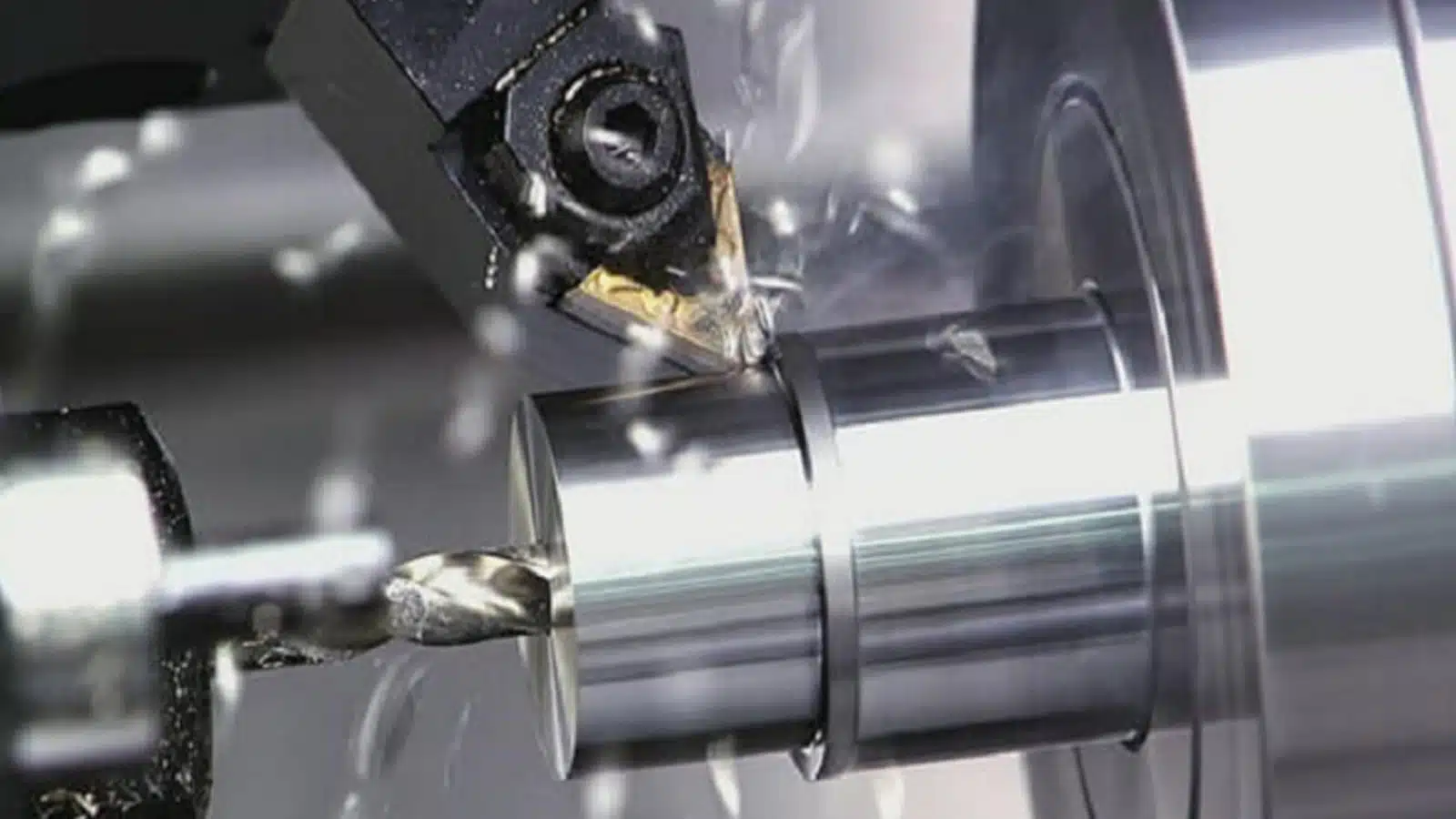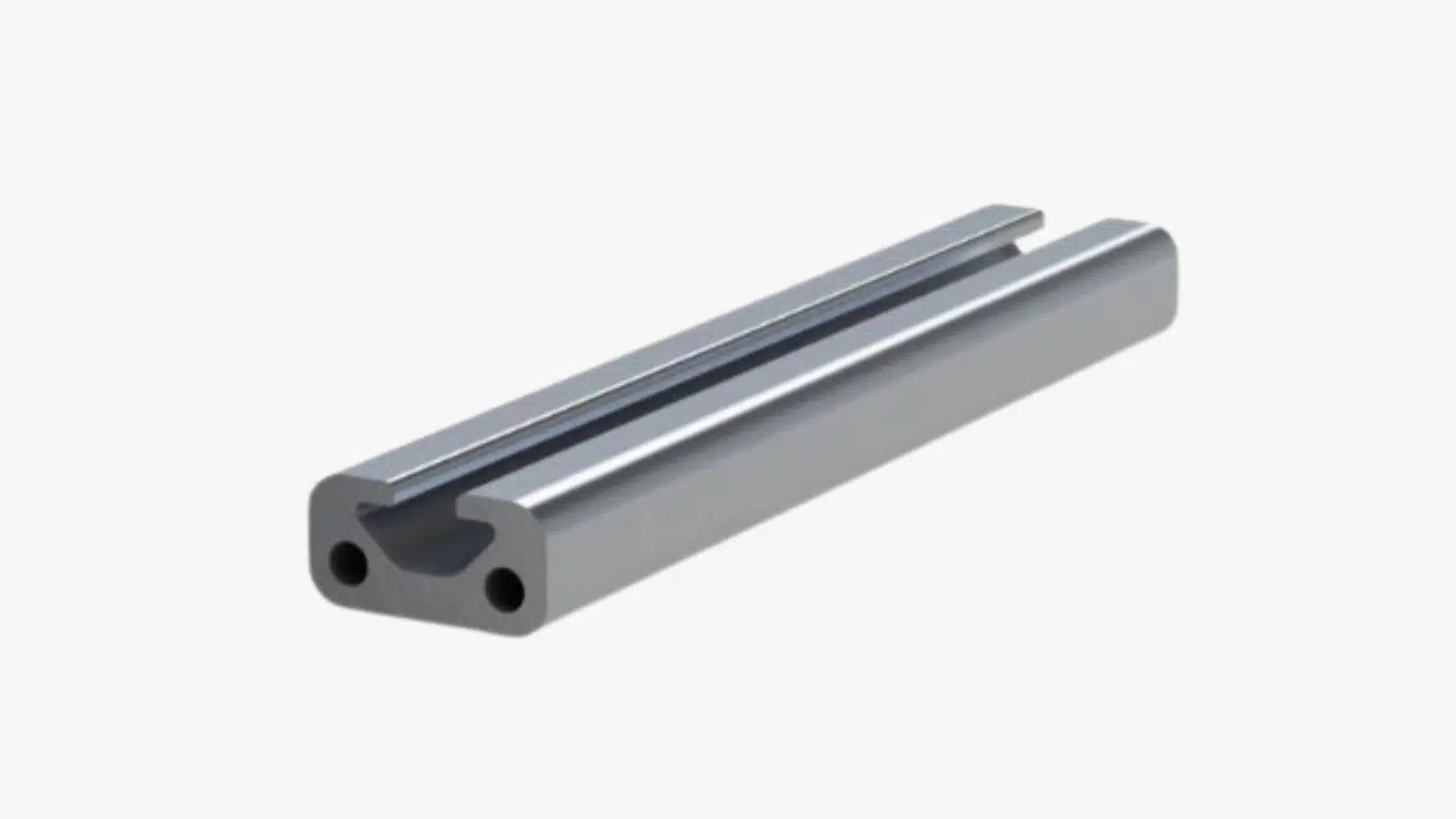CNC milling involves cutting a workpiece using computerized and multipoint cutting tools. Known for its accuracy and precision, the process is an integral part of several industries, most notable being automotive and aeronautics.
This article explains everything you need to know about the CNC milling process before choosing it for your project.
What is CNC Milling?
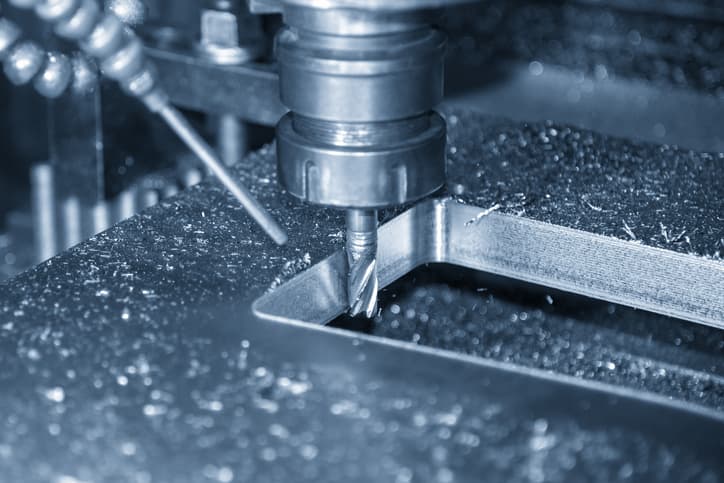
It is a computer-controlled process involving using a cutting tool to remove part of a workpiece. The basic setup involves placing the workpiece on the machine’s table while the cutting tool/s attached to the spindle rotates and moves to shape the workpiece into a finished product.
The rotation and movement of the cutting tool depend on the CNC milling machine type and level of sophistication. The process is highly versatile and compatible with various materials such as aluminum, plastics, wood, and glass.
CNC milled parts have high tolerance as milling machines can achieve a tolerance between +/- 0.001 in. to +/- 0.005 in (some machines can achieve a tolerance of +/- 0.0005 in).
How Does CNC Milling Work?
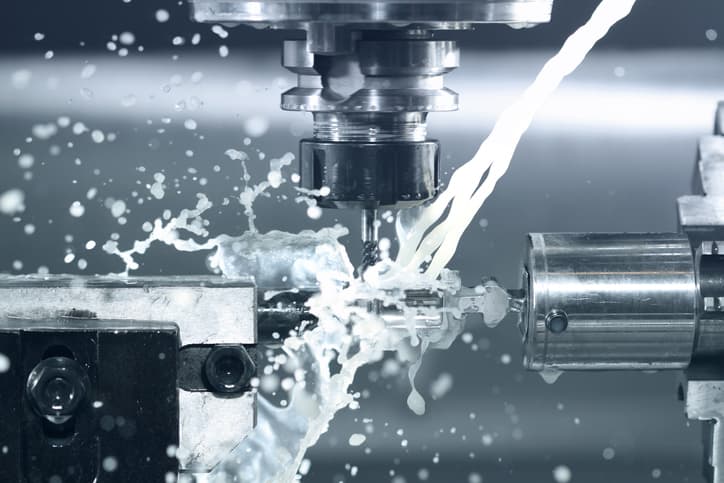
Alongside CNC drilling and turning, CNC milling forms the bedrock of the CNC machining process. However, it has a unique mechanism compared to the others.
The process works by removing parts from a workpiece using a computer-controlled rotating cylindrical cutting tool that rotates and moves along multiple axes.
General Steps of the CNC Milling Process
CNC milling can be broken down into three significant steps:
Step 1: Prepare a 2D or 3D CAD Model
Use CAD/CAM software such as Autodesk Inventor or SolidWorks to create a machinable 2D/3D drawing of the final product.
Preparing a CAD file for CNC machining depends on your software. On the one hand, some software can convert 2D images into 3D CAD files. On the other hand, some software allows you to trace a 2D image to convert it into a 3D file.
There is also a technical drawing given to the operator containing info such as:
- Critical features/dimensions of a part
- Tolerances
- Indication of threads
- Finishing preferences
- Construction lines
Step 2: Export Your Design to a CNC-Compatible File Format
The CNC milling machine won’t understand the model you design unless it is in a compatible CNC machining file format. Therefore, it’s necessary to export your CAD model into CNC-compatible file formats with the CAD/CAM software. Examples of such formats are STEP and STL.
If the software cannot convert the design to such format, you can use several online services such as Cadexchanger and Convert.emachineshop.com.
On converting, the file will direct the machine on the rotational and linear movement, cutting sequence, toolpath, machine, and workpiece speed associated with the process.
Step 3: Set Up a CNC Milling Machine and Operate a CNC Mill
The operator will attach the cutting tools to the spindle and place the workpiece on the table. They will then set up the machine to initiate the machining program and begin milling.
Types of CNC Milling Operations
CNC milling has several operations with different setups and applications. Below are the common types of operation.
Face Milling

In face milling, the cutting tool’s (face milling cutter) rotating axis is perpendicular to the workpiece surface.
The face milling cutter has a unique design notable in its interchangeable cutter inserts. It delivers cutting action using its multiple cutting teeth. As a result, face-milled parts have higher quality surface finishing. Also, the process is in close control, making it easy to produce your desired surface easily.
Plain Milling
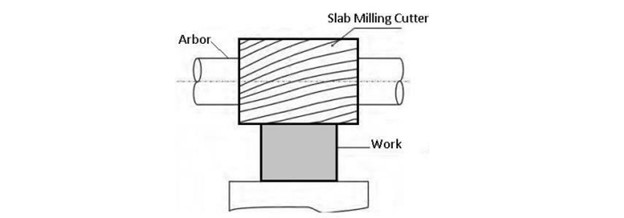
Plain milling is a column and knee operation used for milling plain horizontal surfaces. The cutting tool lies parallel to the workpiece. Therefore, cutting occurs from one end of the workpiece to the other. Operators can feed the table longitudinally, cross, or vertically.
Angular Milling

Angular milling involves milling flat surfaces using a cutting tool at an angle. The process is like plain milling, the only difference being the angular setup.
There are two angular milling cutters: single angle and double angle. The single-angle cutters have teeth on the cutter’s angular face and large flat sides and are suitable for working at angles of 450 or 600.
The double angular milling cutters have V-shaped teeth with conical surfaces and are the better option for milling flat surfaces at 45°, 60°, and 90°.
Form Milling

Form milling is the better method for making irregular contours on a workpiece. The contour can be curved or curved with straight lines. The contours can be concave or convex and are made with teeth opposite such shapes. Consequently, to make a product with a concave edge, the form milling cutter should have a convex edge.
Form milling is a little slower (about 20 to 30%) than regular milling due to the more intricate cutting to make curved surfaces.
Other Types
There are other types of milling machining processes you can use. Below are the important ones:
- Slot Milling: In slot milling, the cutter’s width is lesser than the workpiece width and is used to make a slot in the workpiece.
- Side Milling: It is suitable for milling machining for producing a flat vertical surface in the workpiece. You can control the depth of the cut by rotating the vertical feed screw of the table.
- Gang Milling: Gang milling involves using two cutting tools on the same arbor to cut horizontal surfaces. The combination has unlimited potential and reduces the time taken for the milling process.
Material Selection for CNC Milling
Choosing the right materials can be challenging due to the wide variety of available materials. Below are the factors you can use and the common materials available.
- Part functions: The right material must have inherent functions that aid its function in the environment of use. For example, stainless steel is better than carbon steel when considering corrosion resistance.
- Stress Load: Parts that are applicable under high stress must come from materials that are stable under stress. Inability to do this can lead to deformity or cracking.
- Dimensional Tolerance: Dimensional tolerance aids accuracy during milling. Therefore, it becomes easy to assemble such parts. See the article if you don’t know about the CNC machining dimensional tolerance or contact us.
- Operating Temperature. The materials melting temperature must be below the operating temperature of the CNC milling machine. This will help prevent deformation during milling.
- Cost: Cost is the most important factor that guides selection. However, ensure that you choose the best material with the best mechanical properties in your budget.
CNC milling is suitable for many materials. Common ones include:
- Metals: Aluminum, stainless steel, tool steel. Mild steel, Brass, Copper
- Plastics: ABS, Polycarbonate, Nylon
- Others: Ceramics, composites, phenolics
Advantages and Disadvantages of CNC Milling in the Production Process
The process is an important part of many industrial production processes due to its advantages. Nevertheless, it also has its disadvantages. Below are a few advantages and disadvantages of the process.
Advantages
Accuracy and Precision
CNC milling machines have higher accuracy and precision. Therefore, they can create parts according to their technical specification. As a result, they can mill parts with tolerances as tight as 0.0004. Also, being an automated process reduces the chances of human errors.
Fast and Efficient
Compared to conventional millers, CNC millers are fast and efficient. This is a result of their ability to carry many cutting tools (depending on the ATC), which aids effective tool-changing and efficient processes.
Large Compatible Material
The process is compatible with many compatible materials, e.g., plastic, composites, and metals. Therefore, CNC milling might be the perfect process once you have a block of material.
Disadvantages
Material Wastage
The process is subtractive, i.e., material removal occurs to form the desired part. Therefore, compared to other manufacturing methods such as 3D printing services, there is much material wastage.
High Level of Maintenance
CNC millers require a high level of maintenance to keep them functioning well. The machine is expensive. Therefore, maintenance is important.
Applications of CNC Milling Technique
Milling is highly accurate, precise, and with high tolerance. Hence it has a wide range of applications. Below are some of its industrial applications.
Aerospace
Computer numerical control milling is applicable in making many aeronautic components using materials such as Titanium and Aluminum. These materials are lightweight and durable. Due to the high need for accuracy and precision, the process is considered suitable.
Automotive
The automotive industry uses milling machining due to the requirement for efficiency without losing accuracy. Therefore, it is suitable for products made using the process include interior panels, cylinder heads, drive axles, suspension components, exhaust parts, and gearboxes.
Agriculture
CNC milling machining is suitable for making general purpose parts and components such as gears and shafts, nuts and bolts, and flanges. Furthermore, it is suitable for both large-scale and short-term production capabilities.
Medical
Medical parts such as prostheses require precise and unique design. Therefore, CNC milling is the better method for such parts. The design is retained, and there is productivity and efficiency.
How Much Does CNC Milling Cost?
CNC milling cost depends on factors such as the cost of materials, design, and machine. Below is a short analysis of the factors and their effects.
Part Design
Designing the part is very expensive. You can outsource the CAD file to a designer or make it yourself to bypass the cost. Also, you need to factor in the cost of a manufacturing engineer who will check and authenticate the part and the programmer who converts the CAD file into a CAM file. However, many CNC milling services have incorporated that into their quoting platforms.
Design Complexity
A complex product design requires a machine that can effectively mill the product. The higher the complexity, the higher the milling machine’s sophistication, and the higher the cost.
Also, a complex design will increase the time taken for production to complete, and since CNC milling services use an hourly rate, the cost will increase.
For companies that have a CNC miller, the amount of power the machine consumes will increase.
Production Volume
Large orders are less costly than small orders when you outsource to CNC milling services due to the reduction in the cost per milled item. This is based on the economies of scale. CNC milling is highly repeatable, which reduces the production time.
Type of CNC Milling Machine
There are many types of CNC millers, each with different attributes and costs. The most important factor determining the type of machine you use is the design complexity previously explained above.
CNC milling service sets the cost of milling machines at an hourly rate (sometimes with the operator’s cost). The service calculates the cost of using a milling machine from the purchasing cost and how long it should operate yearly. For example, in Europe, 3-axis machines cost around $40 per hour while 4-axis and 5-axis machines cost between $75 to $120 per hour.
However, there are situations where they can be less expensive. For example, Chinese CNC milling services such as RapidDirect offer 3-axis machines for $8-$10 per hour and 5-axis machines for $30 per hour.
Material
Availability, market cost, and machinability are all important properties that play a role in the cost of the material. The material cost is per block
There are two major types of CNC materials: plastic and metals. On the one hand, plastic is cheap, highly machinable, and highly available. Therefore, they have a low material cost. Examples are ABS ($17), Delrin ($27) Nylon 6 ($30). On the other hand, metals are costlier than plastics. Common examples are: Aluminum 6061 ($25), Aluminum 7075 ($80), Stainless steel 304 ($90) per block
Surface Finishing Option
Finishing options such as anodizing and powder coating help eliminate the signs of CNC milling or improve the part’s aesthetic. Nevertheless, they will also add to your CNC milling cost.
Additional Completion Costs
The cost of shipping also adds to the overall CNC milling cost. Shipping cost depends on the distance from the CNC milling service, deadline, and material weight.
The above factors play an important role in the CNC milling cost and should be deeply considered when making a budget. However, if you are still wondering about the cost and how to reduce it, you should check how much CNC machining cost calculation, speak to an expert, or get an instant quote.
Contact RapidDirect’s CNC Machining Services with Competitive Pricing
We provide professional CNC milling services, focusing on creating high-tolerance precision metal and plastic parts at a competitive cost. Our self-owned factories with advanced multi-axis CNC milling machines can help you deliver high-quality parts with a fast lead time.
Our online quotation platform provides instant quotations with an automated DfM report after you upload your CAD file and choose your material and quantities. What’s better, you can manage your order and track the milling process until delivery!
Types of CNC Milling Machine
A milling machine comprises several components that cut the workpieces. Each type of milling machine has a unique setup, further enabling different operations. Below are the common types you can consider for your project.
Vertical Milling Machine
The vertical milling machine is a 3-axis machine with the table and arm connected to a vertical column, and the spindle is vertical.
On the one hand, with respect to the arm, the table moves up and down the z-axis.
On the other hand, with respect to the spindle, the movement of the table depends on the vertical milling machine type. For example, when using a turret vertical mill, the spindle is stationary while the table moves along the x-axis. In a bed vertical mill, the table can move on the x-axis and the spindle along the direction of the arm on the y-axis.
Vertical milling machines are suitable for complex operations due to their accuracy. Also, they are suitable for working on vertical surfaces and angular shapes.
Horizontal Milling Machine
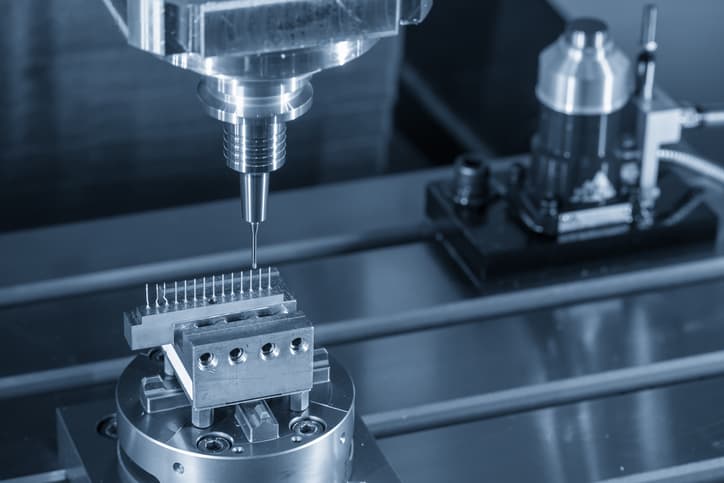
Horizontal milling machines are like vertical milling machines. However, the universal ones can rotate along the z-axis. Therefore, they are 4-axis milling machines. They also have a spindle with a horizontal orientation.
These machines are less versatile than their vertical counterparts. Nevertheless, they are more suitable for heavy machining.
More: Horizontal vs Vertical Milling – What Are Their Differences
Multi-Axis CNC Milling Machine
Multi-axis CNC milling machine can cut at different angles and move along different aces. There are several kinds of multi-axis milling machines:
2-axis milling machines
2-axis milling machines can work a workpiece in the x and z axes. Therefore, they can cut vertically and horizontally in one direction. They are the simplest type of CNC millers.
3-axis milling machines
3-axis milling machines can move in the x, y, and z axes. Therefore, they can cut workpieces vertically in any direction.
They are the most common multi-axis milling machine. However, they have some limitations such as uniform angle reduces the ability to cut some complex parts.
– 4-axis milling machines
4-axis milling machine’s spindle can travel along the three axes: up and down, side to side, and back and forth without the workpiece moving. It can also rotate along the X-axis or A-axis. Hence, it is a suitable choice for making cut-outs and other complex milling operations. These machines are fast, precise, and accurate.
– 5-axis CNC milling machine
A 5-axis milling machine’s spindle and the cutting tool move along three axes and allow rotation along two axes (any of the x-axis, y-axis, and z-axis). They can work on several parts and are the most complete multi-axis CNC machine.
CNC Milling Machine Components
The machine contains several components with different functions to deliver the cutting action. Every CNC miller differs in the sophistication and design of these components. Nevertheless, their functions don’t change. Below are the general components you will see in one
Frame
The frame is responsible for the stability and rigidity of the machine. It houses other components such as the base, detachable columns, and headstock (an important component that houses the spindle).
Spindle
The spindle is the entire rotating unit of the milling machine comprising the shaft that holds the cutting tools and other parts. It is either horizontal or vertical, depending on the milling machine. A motor rotates the spindle on the axis determined by the CNC controller.
Axes
The general axes are x (vertical), y(horizontal), and z(depth). However, other rotating axes are included based on some machines; A, B, and C.
Different machines can rotate along the axis depending on their sophistication. For example, 4-axis CNC milling machines can rotate on the A-axis while 5-axis can rotate on the A and C axes or B and C axes.
Columns
The columns rest on the base containing a coolant reservoir and a pump. Therefore, it functions as a support in the machine’s cooling during the cutting process. The column can be single. However, this depends on the machine’s complexity.
CNC Control Panel
The CNC comprises a CNC monitor and programming buttons for entering data and codes. Therefore, it controls the milling process. As a result, it is the nervous system of the machine. `
Automatic Tool Changer (ATC)
The ATC functions in changing tools during the milling process. Therefore, it increases the speed, tool carrying capacity, and productivity of the machine.
There are two types of ATC:
- Drum ATC: They are suitable for milling requiring lesser than 30 tools.
- Chain ATC: They are suitable for milling requiring more than 30 tools. These are either mounted at the column or separately mounted to the machine.
The above is the general condition that separates different types of ATC. However, the number of tools can change based on the milling machine’s design and manufacturer.
Tool Holders
The tool holder holds the cutting tools to the CNC machine. There are different designs and sizes, with the three major types of tool holders being: BT, CAT, and HSK.
- BT toolholders: They are the standard size for tool holders. BT toolholders have a robust design and a retention knob made with metric threading.
- BBT toolholders: These are upgraded BT toolholders with double contact points with the spindle which improves their stability and rigidity. Consequently, BBT toolholders are highly recommended in the CNC milling space.
- HSK toolholders (Hollow Taper Shank): They are European-designed toolholders with the same angle as the BT toolholders. However, they have an additional orientation groove at the flanges. They are suitable for high-speed machining with low tolerance.
Table
The table is the solid base where you place the workpiece and clamp using fixtures or vice. The type of tables and their added functions depend on the machine. For example, some tables use T-slots for easy clamping. Another example is the horizontal CNC miller using Tap-holes pallets with great flexibility.
Coolant Tank
The coolant tank contains a coolant supplied to the cutting surface or the spindle during milling. As milling produces heat, it helps to cool the surface and lengthen the machine’s lifespan. There are different sizes of coolant tanks. The best should be tailored to the machining operating.
